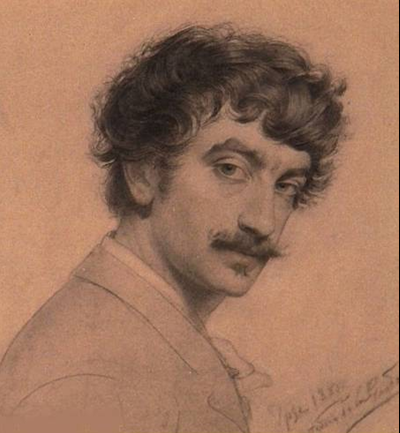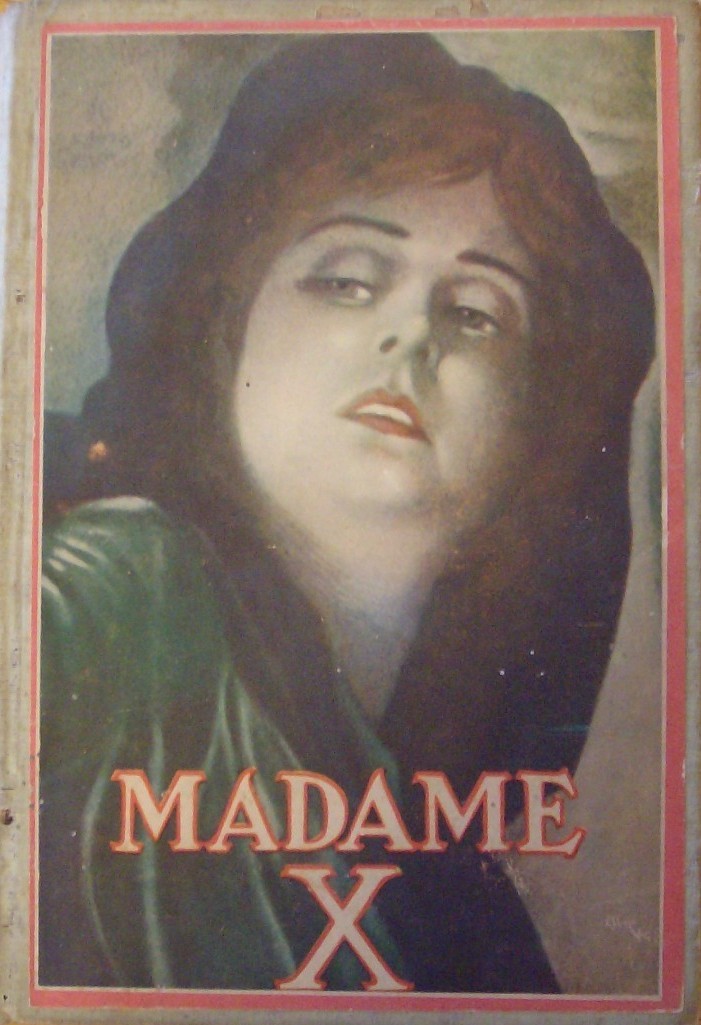|
Virginie Amélie Avegno Gautreau
Virginie Amélie Avegno Gautreau (née Avegno; 29 January 1859 – 25 July 1915) was an American-born Parisian socialite, who gained notoriety as the subject of John Singer Sargent's painting ''Portrait of Madame X''. The suggestion of indiscreet posing in a revealing costume provoked a storm of outrage. Early life and education Gautreau was born Virginie Amélie of European Creole ancestry, in New Orleans, Louisiana, on 29 January 1859, the daughter of Anatole Placide Avegno (3 July 1835 – 7 April 1862) and Marie Virginie de Ternant of Parlange Plantation, a descendant of French nobility. Her grandmother was Virginie de Ternant, founder of the plantation; Louisiana senator and judge Charles Parlange was her maternal uncle. She had a sister, Valentine Marie, who died as a young child of yellow fever. Their parents were white Creoles; their father Anatole was the son of Philippe Avegno (originally Italian) and Catherine Genois. Her father Anatole Avegno served as a majo ... [...More Info...] [...Related Items...] OR: [Wikipedia] [Google] [Baidu] |
Portrait Of Madame X
''Madame X'' or ''Portrait of Madame X'' is a portrait painting by John Singer Sargent of a young socialite, Virginie Amélie Avegno Gautreau, wife of the French banker Pierre Gautreau. ''Madame X'' was painted not as a commission, but at the request of Sargent. It is a study in opposition. Sargent shows a woman posing in a black satin dress with jeweled straps, a dress that reveals and hides at the same time. The portrait is characterized by the pale flesh tone of the subject contrasted against a dark colored dress and background. The scandal resulting from the painting's controversial reception at the Paris Salon of 1884 amounted to a temporary set-back to Sargent while in France, though it may have helped him later establish a successful career in Britain and America. Background The model was an American expatriate who married a French banker, and became notorious in Parisian high society for her beauty and rumored infidelities. She wore lavender powder and prided herself on he ... [...More Info...] [...Related Items...] OR: [Wikipedia] [Google] [Baidu] |
Cameo (carving)
Cameo () is a method of carving an object such as an engraved gem, item of jewellery or vessel. It nearly always features a raised (positive) relief image; contrast with intaglio, which has a negative image. Originally, and still in discussing historical work, cameo only referred to works where the relief image was of a contrasting colour to the background; this was achieved by carefully carving a piece of material with a flat plane where two contrasting colours met, removing all the first colour except for the image to leave a contrasting background. A variation of a carved cameo is a cameo incrustation (or sulphide). An artist, usually an engraver, carves a small portrait, then makes a cast from the carving, from which a ceramic type cameo is produced. This is then encased in a glass object, often a paperweight. These are very difficult to make but were popular from the late 18th century through the end of the 19th century. Originating in Bohemia, the finest examples were mad ... [...More Info...] [...Related Items...] OR: [Wikipedia] [Google] [Baidu] |
American Socialites
American(s) may refer to: * American, something of, from, or related to the United States of America, commonly known as the "United States" or "America" ** Americans, citizens and nationals of the United States of America ** American ancestry, people who self-identify their ancestry as "American" ** American English, the set of varieties of the English language native to the United States ** Native Americans in the United States, indigenous peoples of the United States * American, something of, from, or related to the Americas, also known as "America" ** Indigenous peoples of the Americas * American (word), for analysis and history of the meanings in various contexts Organizations * American Airlines, U.S.-based airline headquartered in Fort Worth, Texas * American Athletic Conference, an American college athletic conference * American Recordings (record label), a record label previously known as Def American * American University, in Washington, D.C. Sports teams Soccer * ... [...More Info...] [...Related Items...] OR: [Wikipedia] [Google] [Baidu] |
Brittany
Brittany (; french: link=no, Bretagne ; br, Breizh, or ; Gallo language, Gallo: ''Bertaèyn'' ) is a peninsula, Historical region, historical country and cultural area in the west of modern France, covering the western part of what was known as Armorica during the period of Roman occupation. It became an Kingdom of Brittany, independent kingdom and then a Duchy of Brittany, duchy before being Union of Brittany and France, united with the Kingdom of France in 1532 as a provinces of France, province governed as a separate nation under the crown. Brittany has also been referred to as Little Britain (as opposed to Great Britain, with which it shares an etymology). It is bordered by the English Channel to the north, Normandy to the northeast, eastern Pays de la Loire to the southeast, the Bay of Biscay to the south, and the Celtic Sea and the Atlantic Ocean to the west. Its land area is 34,023 km2 . Brittany is the site of some of the world's oldest standing architecture, ho ... [...More Info...] [...Related Items...] OR: [Wikipedia] [Google] [Baidu] |
Saint-Malo
Saint-Malo (, , ; Gallo: ; ) is a historic French port in Ille-et-Vilaine, Brittany, on the English Channel coast. The walled city had a long history of piracy, earning much wealth from local extortion and overseas adventures. In 1944, the Allies heavily bombarded Saint-Malo, which was garrisoned by German troops. The city changed into a popular tourist centre, with a ferry terminal serving the Channel Islands of Jersey and Guernsey, as well as the Southern English settlements of Portsmouth, Hampshire and Poole, Dorset. The famous transatlantic single-handed yacht race Route du Rhum, which takes place every four years in November, is between Saint Malo and Pointe-à-Pitre in Guadeloupe. Population The population in 2017 was 46,097 – though this can increase to up to 300,000 in the summer tourist season. With the suburbs included, the metropolitan area's population is approximately 133,000 (2017). The population of the commune more than doubled in 1967 with the merging ... [...More Info...] [...Related Items...] OR: [Wikipedia] [Google] [Baidu] |
Salon (Paris)
The Salon (french: Salon), or rarely Paris Salon (French: ''Salon de Paris'' ), beginning in 1667 was the official art exhibition of the Académie des Beaux-Arts in Paris. Between 1748 and 1890 it was arguably the greatest annual or biennial art event in the Western world. At the 1761 Salon, thirty-three painters, nine sculptors, and eleven engravers contributed. Levey, Michael. (1993) ''Painting and sculpture in France 1700–1789''. New Haven: Yale University Press, p. 3. From 1881 onward, it has been managed by the Société des Artistes Français. Origins In 1667, the royally sanctioned French institution of art patronage, the Académie royale de peinture et de sculpture (a division of the Académie des beaux-arts), held its first semi-public art exhibit at the Salon Carré. The Salon's original focus was the display of the work of recent graduates of the École des Beaux-Arts, which was created by Cardinal Mazarin, chief minister of France, in 1648. Exhibition at the Salo ... [...More Info...] [...Related Items...] OR: [Wikipedia] [Google] [Baidu] |
Antonio De La Gándara
Antonio de La Gándara (16 December 186130 June 1917) was a French painter, pastellist and draughtsman. La Gándara was born in Paris, France, but his father was of Spanish ancestry, born in San Luis Potosí, Mexico, and his mother was from England. La Gándara's talent was strongly influenced by both cultures. At only 15 years of age, La Gándara was admitted as a student of Jean-Léon Gérôme and Cabanel at the ''École des Beaux-Arts''. Soon, he was recognized by the jury of the 1883 '' Salon des Champs-Élysées'', who singled out the first work he ever exhibited: a portrait of Saint Sebastian. Less than ten years later, young La Gándara had become one of the favourite artists of the Paris elite. His models included Countess Greffulhe, the Grand Duchess of Mecklenburg, the Princess of Chimay, the Prince de Polignac, the Prince de Sagan, Charles Leconte de Lisle, Paul Verlaine, Leonor Uriburu de Anchorena, Sarah Bernhardt, Romaine Brooks, Jean Moreas, Winnaretta Singer, and ... [...More Info...] [...Related Items...] OR: [Wikipedia] [Google] [Baidu] |
Gustave Courtois
Gustave-Claude-Étienne Courtois, also known as Gustave Courtois (; 18 May 1852 in Pusey, Haute-Saône – 1923 in Neuilly-sur-Seine) was a French painter, a representative of the academic style of art. Life Courtois was born 18 May 1852 in Pusey, Haute-Saône, France to an unwed mother who was devoted to him. Early in life, Courtois revealed an interest in art and entered the École municipale de dessin in Vesoul (Franche-Comté). His drawings were shown to Jean-Léon Gérôme, and in 1869, Gérôme encouraged Courtais to enter the École nationale supérieure des Beaux-Arts in Paris. Through his life, Courtois was in close friendship with fellow student Pascal Dagnan-Bouveret, together with whom he maintained a fashionable studio in Neuilly-sur-Seine from the 1880s. He taught painting at Académie de la Grande Chaumière, Académie Colarossi, Paris, where Harriet Campbell Foss, Georges d'Espagnat, Eva Bonnier, Emma Cheves Wilkins, and Dora Hitz were students. Courtois ... [...More Info...] [...Related Items...] OR: [Wikipedia] [Google] [Baidu] |
Madame X (Madame Pierre Gautreau), John Singer Sargent, 1884 (unfree Frame Crop)
''Madame X'' (original title ''La Femme X'') is a 1908 play by French playwright Alexandre Bisson (1848–1912). It was novelized in English and adapted for the American stage; it was also adapted for the screen twelve times over sixty-five years, including versions in Tagalog, Greek, and Spanish as well as English. The play has been cited as an example of the literary tradition of portraying the mother figure as being "excessively punished for slight deviation from her maternal role". Kaplan, E. Ann (2013). Motherhood and Representation: The Mother in Popular Culture and Melodrama'. Abingdon, Oxfordshire, UK: Routledge. . p. 77. Plot The protagonist is a woman who has been thrown out into the street without any money by her jealous husband, when he discovers she has been carrying on an affair. She is not even allowed to see their young son. She sinks into depravity. Twenty years later, she has become the mistress of a criminal. When he finds out that her husband is ... [...More Info...] [...Related Items...] OR: [Wikipedia] [Google] [Baidu] |
Carolus-Duran
Charles Auguste Émile Durand, known as Carolus-Duran (Lille 4 July 1837 – 17 February 1917 Paris), was a French painter and art instructor. He is noted for his stylish depictions of members of high society in Third Republic France. Biography He was the son of a hotel owner. His first drawing lessons were with a local sculptor named Augustin-Phidias Cadet de Beaupré (1800–?) at the Académie de Lille; then took up painting with François Souchon, a student of Jacques Louis David. He went to Paris in 1853, where he adopted the name "Carolus-Duran". In 1859, he had his first exhibition at the Salon. That same year, he began attending the Académie Suisse, where he studied until 1861. One of his early influences was the Realism of Gustave Courbet. From 1862 to 1866, he travelled to Rome and Spain, thanks to a scholarship granted by his hometown. During that time, he moved away from Courbet's style and became more interested in Diego Velázquez. Upon returning to France, he ... [...More Info...] [...Related Items...] OR: [Wikipedia] [Google] [Baidu] |
Samuel Jean Pozzi
Samuel Jean de Pozzi (3 October 1846 – 13 June 1918) was a French surgeon and gynecologist. He was also interested in anthropology and neurology. He is remembered today for John Singer Sargent's portrait of him. Early life Samuel-Jean Pozzy (he changed the spelling later) was born in Bergerac, Dordogne, Bergerac, Dordogne to a family of Italian/Swiss descent. Samuel's father Benjamin Dominique Pozzy (20 March 1820 – 1905), a minister of the Reformed Church of France, married Marthe-Marie Inés Escot-Meslon (11 March 1821 – 1857) on 29 April 1844 in Bergerac, Dordogne, France. She died when Samuel was ten, and his father then married an Englishwoman, Mary Anne Kempe, on 19 October 1859 in Bakewell, Derbyshire, England. Pozzi went to study first to Pau, Pyrénées-Atlantiques, Pau and then to Bordeaux. For his handsome appearance and cultured demeanor, other pupils nicknamed him ''The Siren''. Medical career In 1864, Pozzi began to study medicine in Paris. When the Franco- ... [...More Info...] [...Related Items...] OR: [Wikipedia] [Google] [Baidu] |
Tabloid Journalism
Tabloid journalism is a popular style of largely sensationalist journalism (usually dramatized and sometimes unverifiable or even blatantly false), which takes its name from the tabloid newspaper format: a small-sized newspaper also known as half broadsheet. The size became associated with sensationalism, and ''tabloid journalism'' replaced the earlier label of ''yellow journalism'' and ''scandal sheets''. Not all newspapers associated with tabloid journalism are tabloid size, and not all tabloid-size newspapers engage in tabloid journalism; in particular, since around the year 2000 many broadsheet newspapers converted to the more compact tabloid format. In some cases, celebrities have successfully sued for libel, demonstrating that tabloid stories have defamed them. Publications engaging in tabloid journalism are known as rag newspapers or simply rags. Tabloid journalism has changed over the last decade to more online platforms that seek to target and engage youth consu ... [...More Info...] [...Related Items...] OR: [Wikipedia] [Google] [Baidu] |









